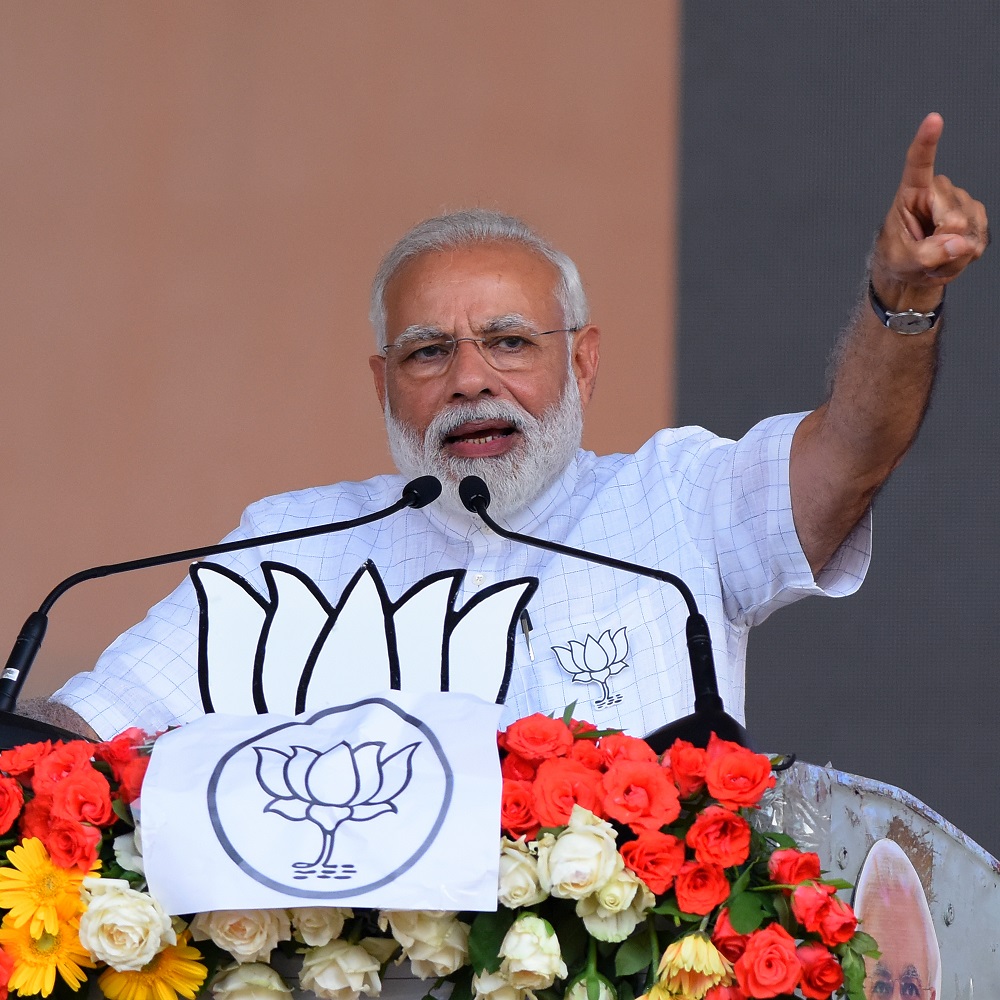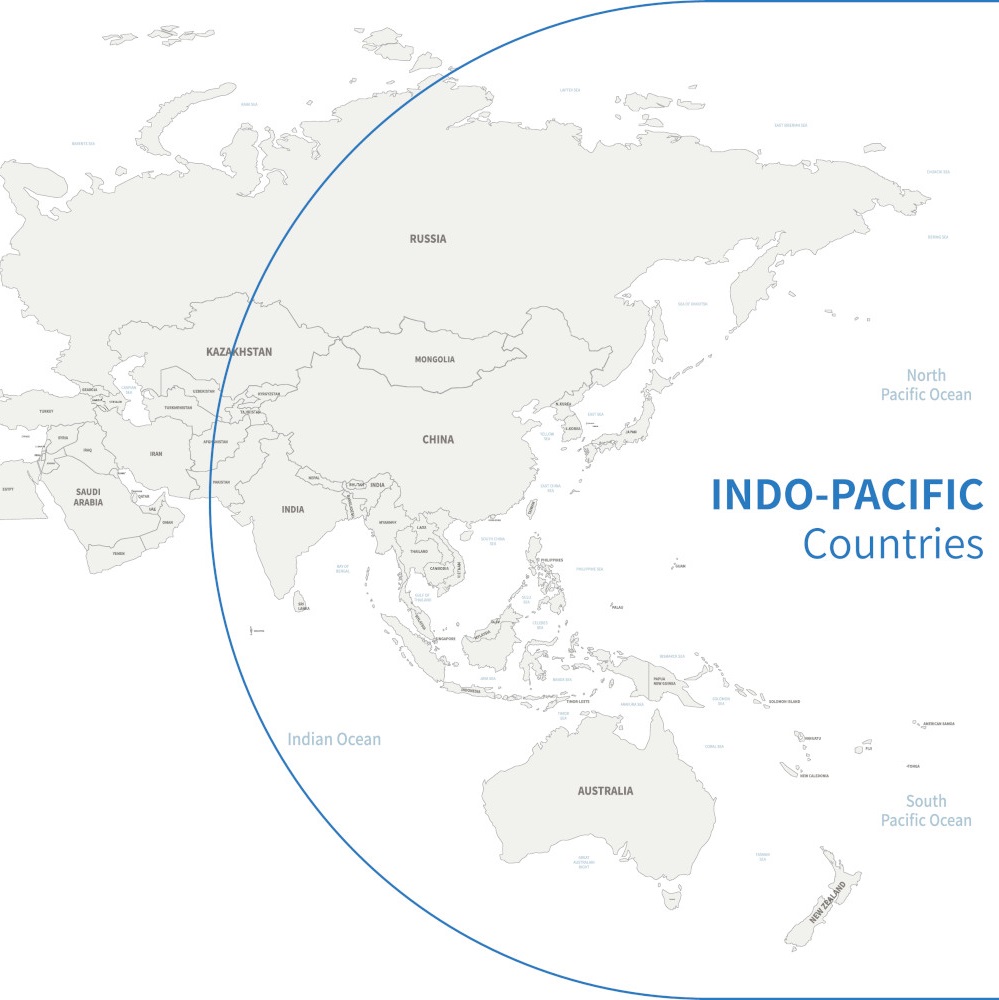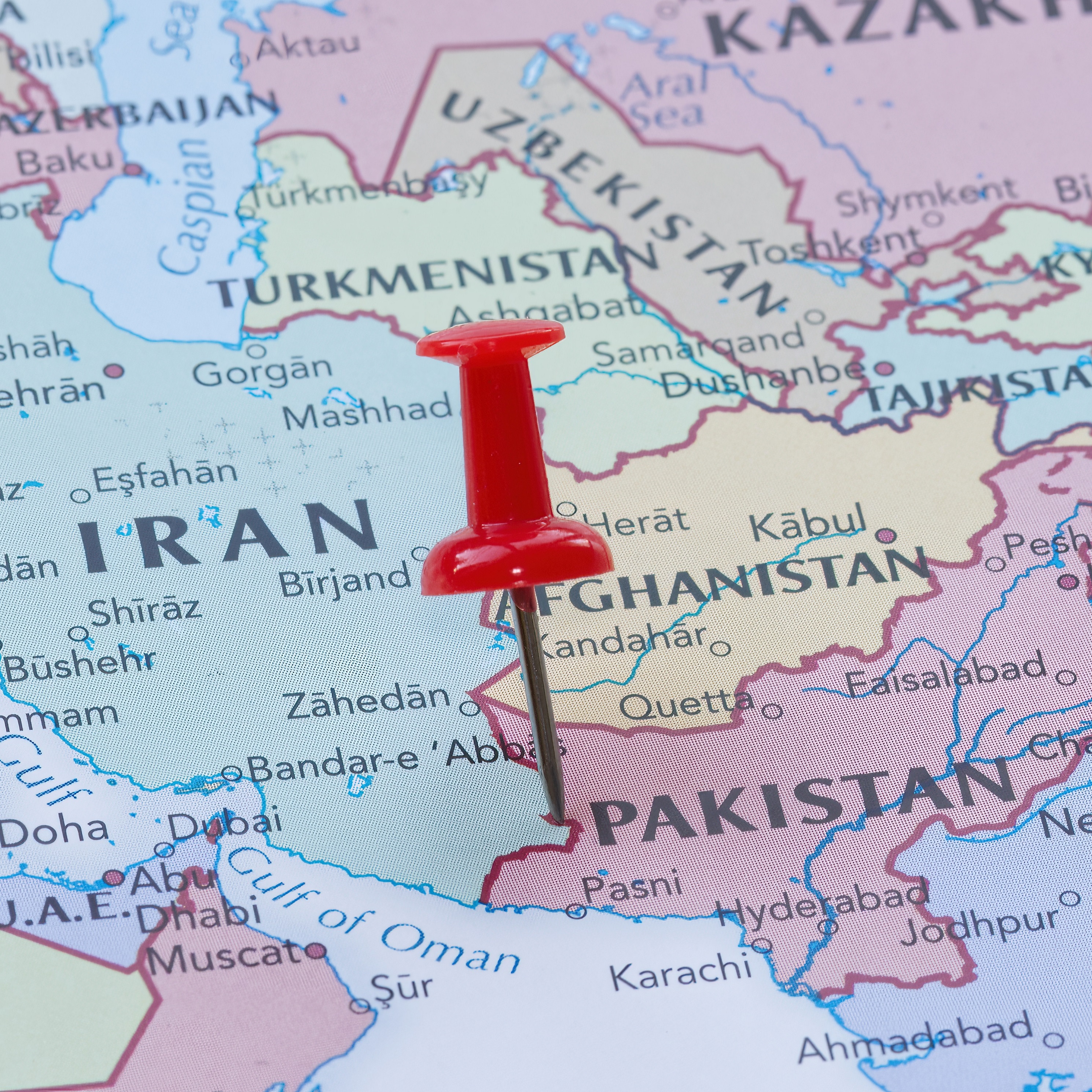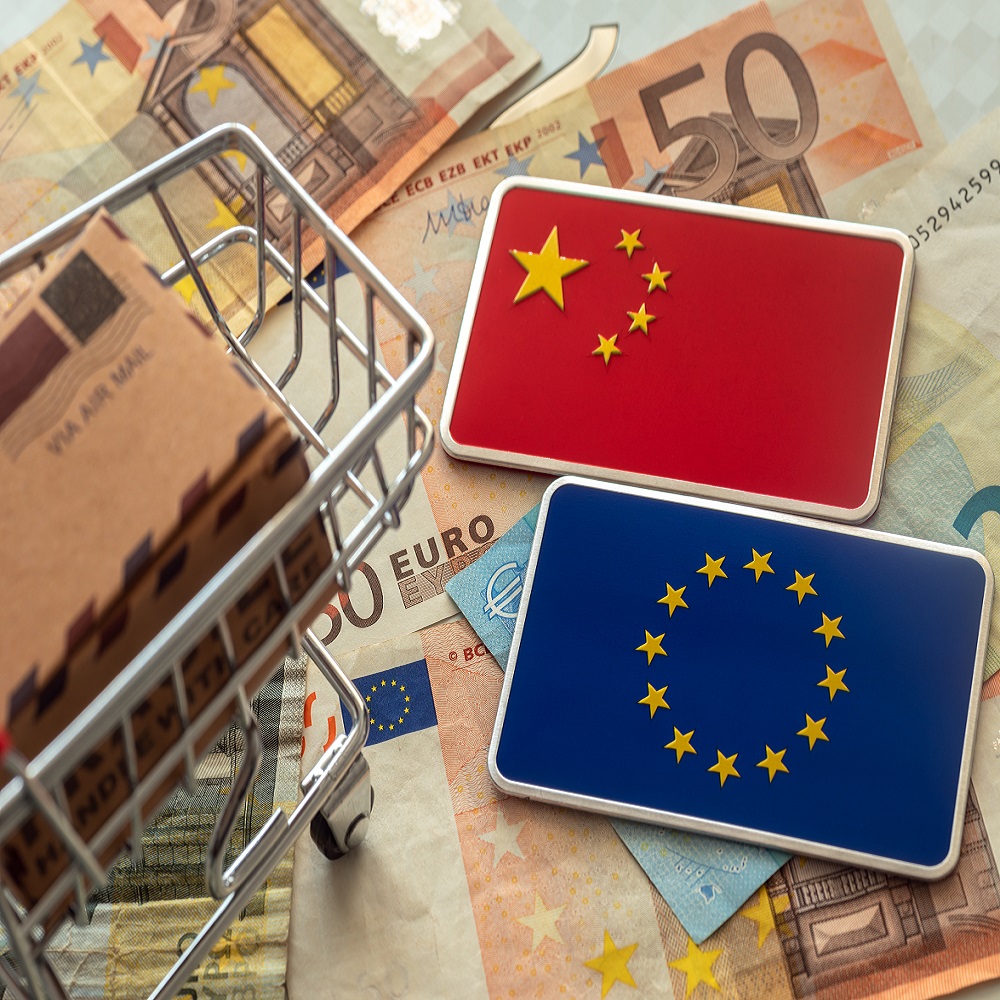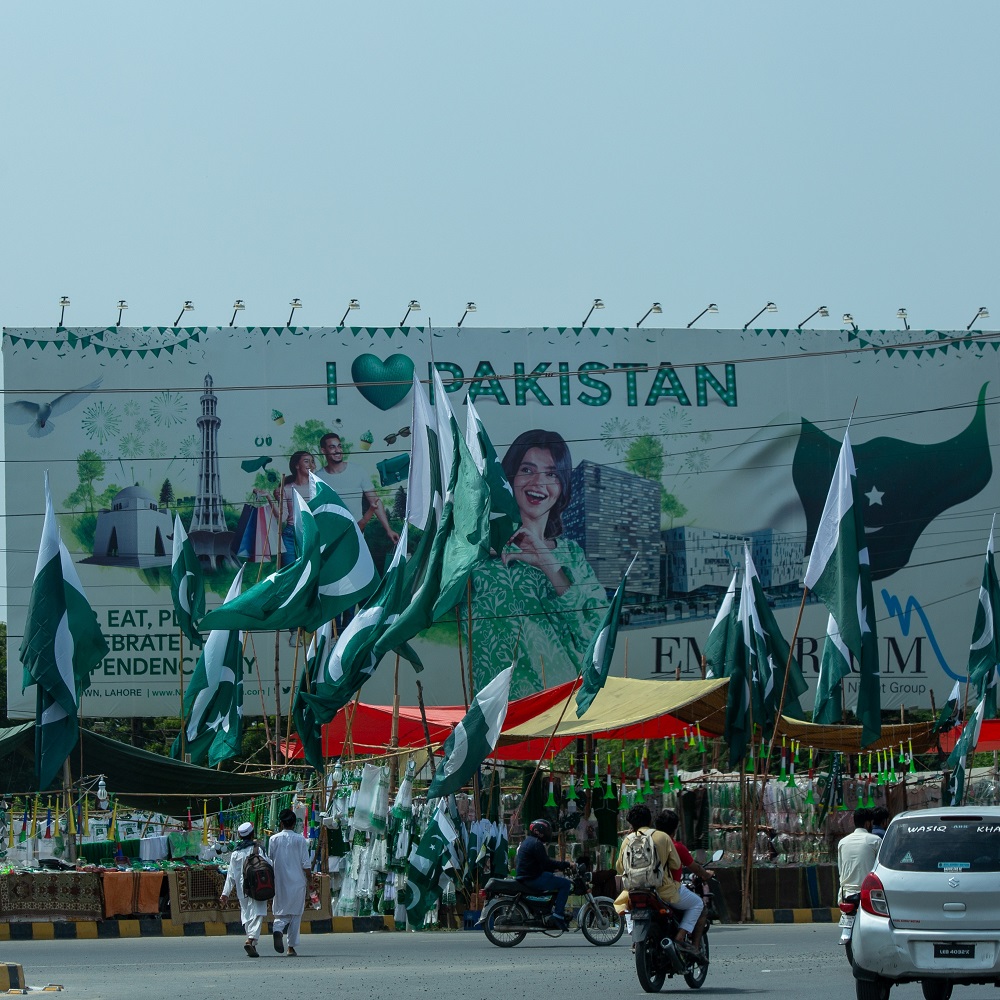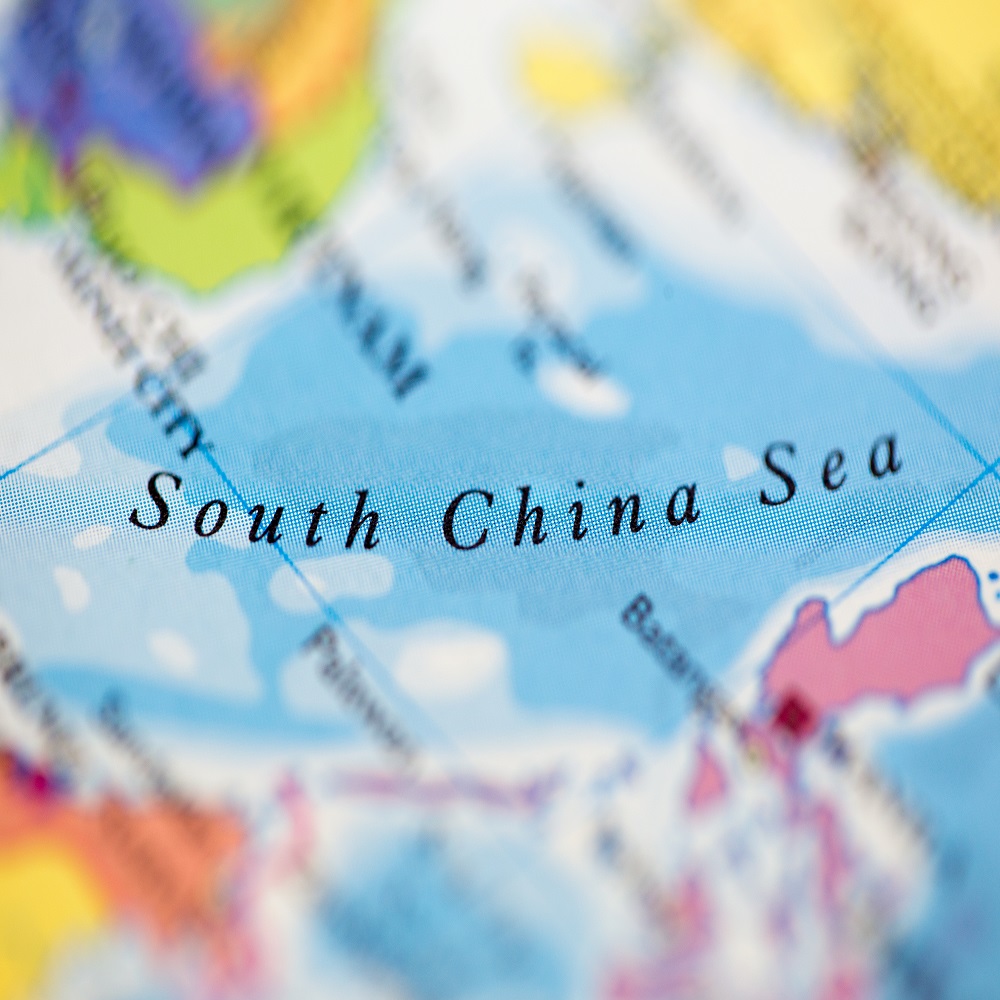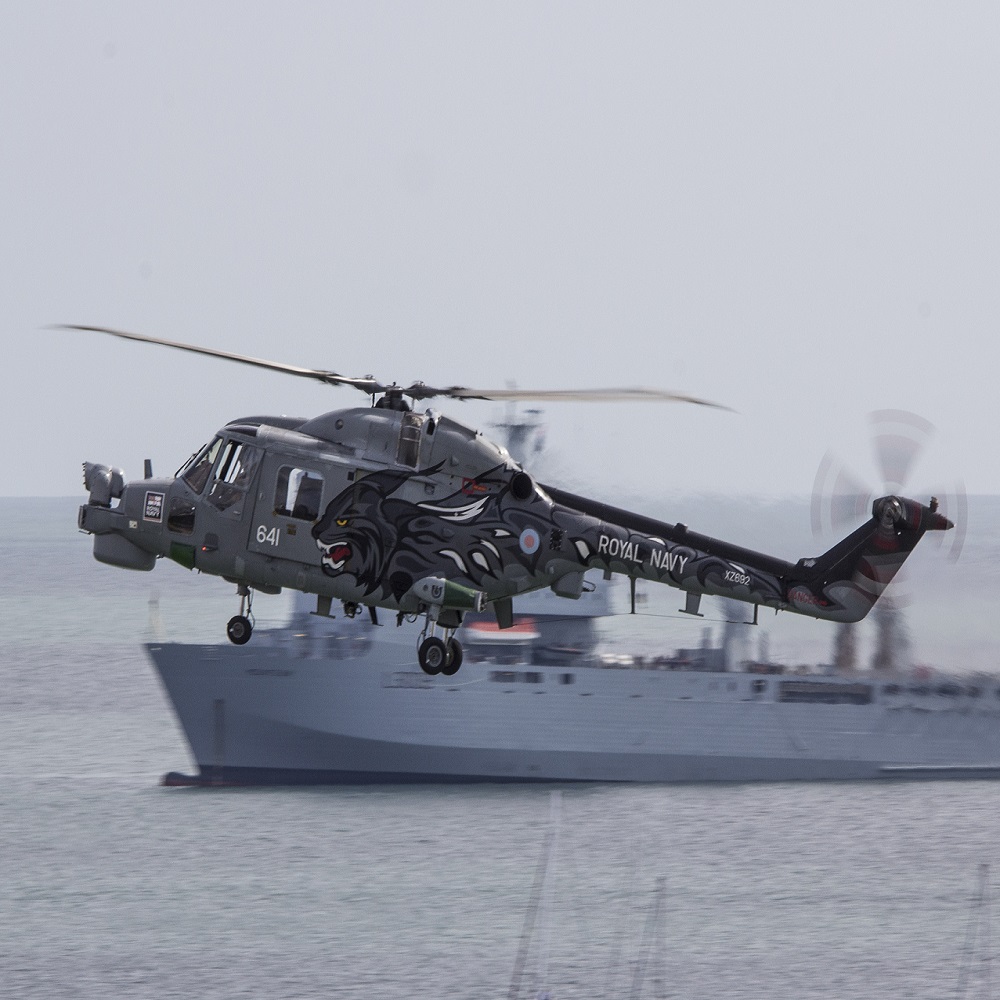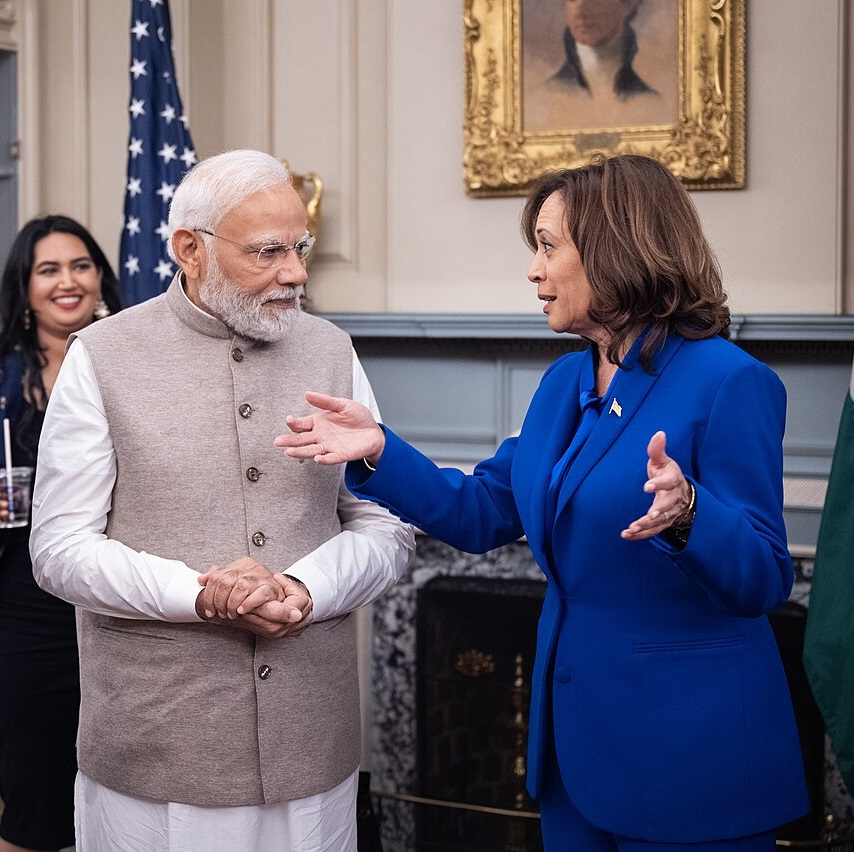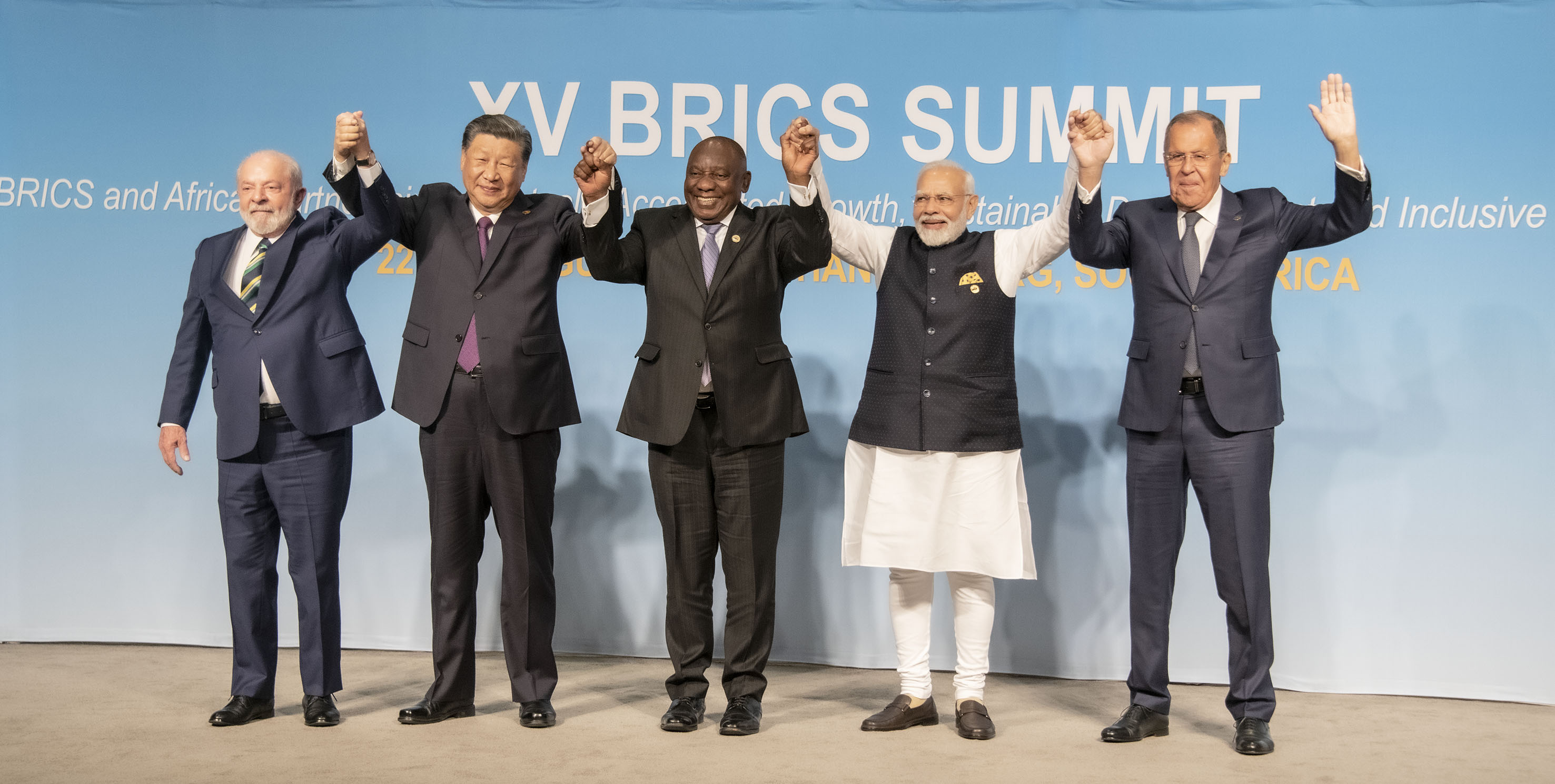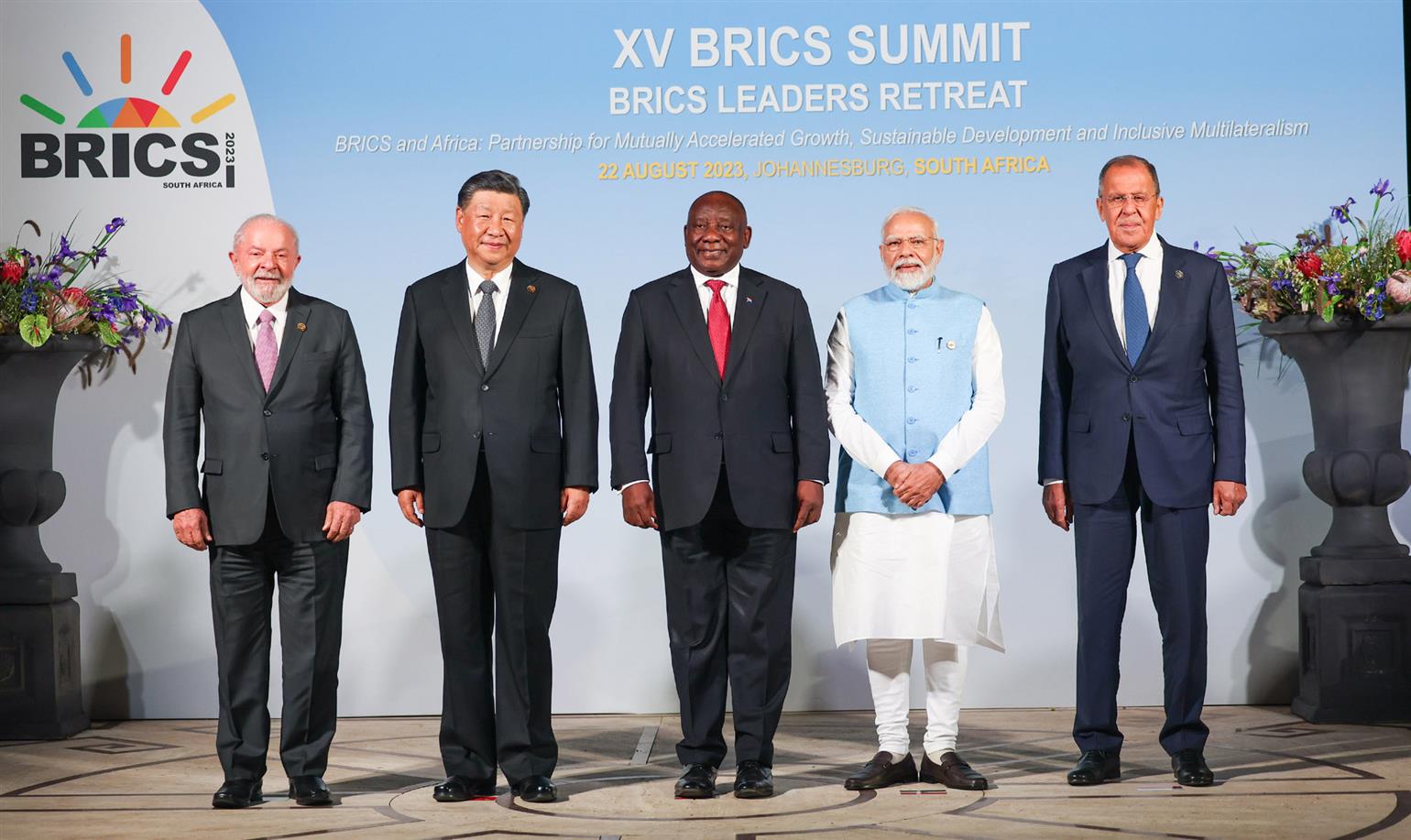Beijing’s Aggression Behind Emerging India-Philippines Defense Relationship
by Peter Chalk
The People’s Republic of China’s increasingly assertive stance on affirming its territorial claims in the Indo-Pacific is informing the evolution of a closer defense relationship between New Delhi and Manila. On September 25, the Philippine Coast Guard removed a floating barrier that China had installed at Huangyan Dao (黄岩岛, an island in the Scarborough Shoal) in the South China Sea (SCS) the previous day. Responding to questions about the incident, PRC Foreign Ministry spokesperson Wang Wenbin (王文斌) maintained that “China Coast Guard did what was necessary to block and drive away the Philippine vessel,” and that “Huangyan Dao has always been China’s territory. What the Philippines did looks like nothing more than self-amusement” (FMPRC, September 26; FMPRC, September 27). Earlier in September, New Delhi’s Ambassador to the Philippines Shambu Kumaran expressed solidarity with Manila by pointedly rejecting the Chinese Communist Party (CCP)’s new extended ten-dash map of its sovereignty claims in the South China Sea (SCS) and Line of Actual Control (LAC). He criticized the move from Beijing as unhelpful “cartographic expansionism” (Manila Times, September 3).
These two incidents, occurring in the space of less than a month, are only the most recent in a string of aggressive acts in recent years. The reactions of both India and the Philippines are indicative of growing unity among some of China’s neighboring countries as a direct response to the security threat that China poses. In recent years, these two partners have increased the areas of engagement for security collaboration and expressed an intent to further such initiatives. The PRC lambasts the Philippines for choosing “to ignore China’s goodwill and sincerity” (MOFA, August 8), but this rhetoric only reaffirms Manila’s shifting calculus. There are limits to how close the Indo-Philippines defense relationship will get, but there is still ample room to explore various forms of cooperation short of a mutual defense treaty. The coming years will see much more of that exploration start to materialize.
The PRC has several options in terms of responding to this emerging dynamic. These range from economic coercion, influence operations, and leveraging its relationship with Russia to put pressure on India. It is unclear which combination of these the PRC will ultimately pursue, though the PRC has made it abundantly clear that backing down in the South China Sea is not an option it is willing to entertain.
India’s Reorientation over the SCS and Growing Defense Cooperation with the Philippines
In June, the fifth session of the Joint Commission on Bilateral Cooperation (JCBC) took place at Hyderabad House in New Delhi. At the meeting, the Philippine Secretary for Foreign Affairs, Enrique Manalo, and Indian External Affairs Minister (EAM), Dr. Subrahmanyam Jaishankar, issued a joint communiqué calling for full adherence to the 2016 Arbitral Award on the SCS. This was the first time that the Narendra Modi government explicitly endorsed the Permanent Court of Arbitration (PCA)’s ruling in favor of Manila. Until then, the administration had adopted a neutral stance on the issue, merely stressing that it supports freedom of navigation, overflight, and unimpeded commerce in the region, based on the principles of international law. Even after the 2016 judgment, India only acknowledged the outcome of the award, and did not take sides on the legitimacy of the decision (Observer Research Foundation, July 12; South China Morning Post, July 9). The June 2023 statement is therefore a highly symbolic diplomatic gesture, indicating a burgeoning bilateral relationship between New Delhi and Manila to promote an open, rules-based order in the Indo-Pacific.
India’s tensions with China have long revolved around managing disputed territory along their 2,100-mile-long northern border in the Himalayas, known as the Line of Actual Control. For a long time, the Modi administration maintained a neutral stance on the SCS disputes. This is not just to avoid unwanted provocation: The Modi government has also been sensitive to the possibility that blanket opposition to the PRC’s stance in the SCS could provoke Beijing to expand naval deployments in the Indo-Pacific, potentially undermining the regional balance of power—and concomitant stability—that is critical to India’s own economic development. New Delhi has also generally been unwilling to comment on the domestic policies of its neighbors in Southeast Asia, lest this be construed as violating the two cardinal principles of the so-called “ASEAN way”: non-interference in internal affairs and mutual respect for national sovereignty.
Although these considerations are still germane, the Modi administration has recently exhibited a more outspoken and proactive position on the SCS. Not only is preserving peace and stability in this body of water now a central tenet in the prime minister’s reinvigorated Act East Policy (EAP), in August 2021 his government sent naval ships to the region to take part in a series of coordinated sailings and exercises with Australia, Indonesia, Japan, the Philippines, Singapore, the United States, and Vietnam (The Tribune, August 3, 2021; South China Morning Post, August 13, 2021). New Delhi is also a member of the Quad, a grouping of like-minded states that in 2022 declared their joint opposition to any unilateral or coercive actions that seek to change the status quo in the East and South China Seas. While the wording of the declaration does not mention the PRC by name, its message clearly aims to denounce Beijing’s activities as a threat to stability, transparency, and the rules-based order in the region. Indeed, during a state visit to Washington, DC in June 2023, Modi and President Biden declared themselves “among the closest partners in the world” and committed to forging a more robust relationship—within the parameters of the Quad—to countering a clear and upward trend of Chinese aggression in the SCS (Asia Financial, June 29).
India has also been more direct in articulating its concerns over the harmful effects the PRC is having on diplomatic efforts to resolve territorial disputes in the SCS. For instance, at the 15th East Asia Summit in November 2020, EAM Jaishankar expressed concern about actions and incidents in the SCS that “erode trust” and said ongoing negotiations on the proposed code of conduct “should not be prejudicial to legitimate interests of third parties and should be fully consistent” with the UN Convention of the Law of the Sea (UNCLOS) (The Hindustan Times, November 14, 2020). It is in this context that India has steadily moved to ramp up its defense cooperation with the Philippines.
Security Collaborations
In recent months, New Delhi and Manila have closely collaborated on a range of security matters beyond the explicit recognition of the 2016 PCA’s ruling against Beijing in the SCS.
In January 2022, the government of Ferdinand Marcos Jr. signed a deal worth $374.96 million to obtain a shore-based variant of the BrahMos supersonic anti-ship cruise missile system. This makes Manila the first foreign customer for the weapons platform jointly developed by India and Russia (The Hindu, January 28, 2022). The Philippine Marine Corps’ newly developed Coastal Defense Regiment (CDR) will receive three batteries, the first of which will arrive before the end of 2023 (Indian Aerospace & Defence Bulletin, August 3). Notably, during Balikatan 23 (April 11–28), the most recent iteration of the annual military exercises between Manila and Washington, the CDR played a leading role in helping to retake the Filipino island of Bosco from a fictitious foreign aggressor, i.e. China.
During the 13th India-Philippines Foreign Office Consultations in August 2022, both sides expressed their desire to deepen security cooperation, which they again reiterated at the conclusion of their 4th Joint Defense Cooperation Committee and 2nd Service-to-Service meeting in March 2023 (Manila Times, August 23, 2022; The Economic Times, June 30). To give substance to this commitment, the two countries agreed to work together on projects related to cyber and space security, military medicine, and humanitarian assistance and disaster relief. They also pledged to look into the possibility of deploying a permanent Indian Defense Attaché (DA) to Manila (Philstar, April 4). This latter possibility was again highlighted as a shared desire by both parties at the fifth JCBC meeting in June 2023, as was enhancing security ties through regular or upgraded interactions between defense agencies and combined maritime drills. India also offered the Philippines a concessional line of credit to buy indigenously manufactured military equipment, including naval and aviation assets (The Hindu, June 29; South China Morning Post, June 30; Mint, August 15).
In August 2023, the Philippine and Indian coast guards signed a memorandum of understanding (MoU) to enhance professional maritime linkages in the areas of law enforcement, search and rescue, and pollution response. The MoU additionally mentioned exploring future avenues for joint exercises and training collaboration, while the two services also inked a Standard Operating Procedure for exchanging “white” (aka, licit) shipping information (The Economic Times, August 23).
Rationalizing India’s Recalibrated Policy to the SCS and the Philippines
Accounting for India’s recalibrated approach to the SCS issue and its defense relations with the Philippines relies on several interrelated factors. First, the Modi government has clearly balked at the CCP’s growing assertiveness in the region. New Delhi views it as a direct threat to freedom of navigation in a strategic sealine of communication that plays a crucial role in fostering the Act East Policy’s long-term goal of deepening engagement with Southeast Asia. Beijing’s extensive territorial claims in the SCS also undermine political and economic stability in the broader Indo-Pacific region and challenge the legitimate sovereign rights of littoral states. All of this runs counter to New Delhi’s prioritization of a peaceful, transparent, and inclusive maritime order.
Second, India’s membership of the Quad has further reinforced and entrenched the country’s commitment to offsetting the PRC’s rapidly rising influence by supporting an open and rules-based Indo-Pacific and opposing unilateral actions that unduly raise tensions in the South and East China Seas. This was precisely the message that emanated from the Quad’s most recent Ministerial Meeting in New Delhi on March 3, 2023, where the grouping expressly presented itself as a force for regional and global good (The Hindu, March 3).
Third, the June 2020 border clash with China in the Galwan Valley on the LAC (and subsequent periodic flareups) have encouraged New Delhi to assume a much more forceful stance against Beijing. Modi’s government now sees the PRC as the only major power in the region that poses a direct threat to its core national security interests (China Daily, July 27). Moreover, the border clash, which left 15 Indian soldiers dead, has encouraged India to be more supportive of countries in the Indo-Pacific that have similarly suffered from China’s belligerence. The Philippines is one such country, having borne the brunt of the PRC’s incursions in the SCS (especially in and around the Manila-controlled Second Thomas Shoal in the Spratly Island chain).
Fourth, forging a closer defense relationship could open the door for India to ink more high-tech arms agreements with the Philippines. In this way, the sale of the BraMos cruise missile system in 2022 could be the first of many. As noted above, in June 2023 the Modi administration offered Manila a concessional line of credit to buy indigenously produced military hardware, so a suitable funding mechanism for orchestrating munition transfers is in place. Any future agreement to send advanced weapon platforms to the Philippines would represent a significant export revenue stream for New Delhi. The country’s coast guard has already expressed interest in buying a batch of MK III multi-role light helicopters from India (The Print, July 17; The Eurasian Times, August 24). Just as importantly, such deals would send a strong signal to the PRC of the type of security and diplomatic headaches India is willing to instigate for Beijing if it pushes its territorial claims along the LAC too aggressively.
Fifth, since assuming office on June 30, 2022, President Marcos has reversed the previous administration’s foreign policy agenda to one that is now largely congruent with India’s: emphasizing adherence to democratic principles, ensuring the country’s sovereign border rights, reconsolidating the military alliance with the United States, and shoring up links with regional allies to counter Chinese intimidation. With similar outlooks on regional affairs and no immediate conflict of interests, it should come as no major surprise that the two nations have found common ground in strengthening and enhancing their bilateral defense cooperation.
Deepening Collaboration Short of Alliance
The PRC’s aggressive advances in the Indo-Pacific provide a mutual motivation for New Delhi and Manila to cooperate militarily. A serious escalation of tensions along the LAC or an act of overt aggression in areas of the SCS that fall within the Philippines’ exclusive economic zone could well precipitate a renewed push to further intensify bilateral ties based on a common commitment to deter and blunt Chinese adventurism.
The likelihood of a codifying bilateral defense commitments, however, is low. India has always been wary of such formalized arrangements, especially in the conflict-prone Indo-Pacific theater, as they could ultimately force the country into a costly confrontation with China. The statutory strategic partnership agreement that Australia concluded with Manila in September is therefore something that the Modi administration would likely eschew. Rather, future defense relations can be expected to take the form of more flexible MoUs and protocols calling for greater information sharing, additional port calls, a higher tempo of exercises and training, and increased support for international rulings on the law of the sea. None of these will transform the Indian-Philippine partnership into a “mini alliance.” Nevertheless, opportunities for deepening the strategic coordination of two nations that already engage in a range of security collaborations represent a enhancement of India’s positioning in the region, to the exclusion of China.
The PRC will doubtless interpret closer ties between New Delhi and Manila as part of a wider U.S.-led containment policy aimed at shutting China out of its own geostrategic “backyard.” As it routinely does when outside nations dispatch forces to the SCS, Beijing will almost certainly reject any Indian naval presence in the area as an unjustified—if not illegitimate—intrusion in its sovereign sphere of influence. For instance, an August article from Baijiahao, one of China’s largest blog platforms for independent writers, argues that New Delhi’s approach to the Philippines in part of a broader plan to wrest control of the entire SCS (Baijiahao, August 27). This echoes a line that CCP propaganda has often deployed in recent years (Remin Zixun, March 3, 2021). Despite these rhetorical protestations, the PRC would probably not move to actively counter any such deployment for fear that this could spark a direct clash both with New Delhi and its partners in the Quad. The preferred strategy would likely default to economic coercion—wielding the country’s considerable financial leverage to pressure pliable Southeast Asian actors into distancing themselves from the Indo-Philippine partnership. As has been evident with past “lobbying” efforts directed at Cambodia, a precedent exists for this type of economic offensive.
The PRC may also look to subversive foreign influence operations (FIOs) as a means for decoupling Indian-Filipino maritime defense cooperation. The CCP’s United Front Work Department (UFWD), which has a remit for exercising political influence inside and outside China, enjoys an active presence in the Philippines. Local intelligence sources have already linked the Department to FIO campaigns aimed at manipulating public and elite opinion in favor of Beijing’s claims in the SCS (China Brief, May 19). As it has done with regards to negatively shaping popular attitudes on Manila’s alliance with Washington, the PRC could easily use the UFWD as a conduit for generating opposition—if not outright hostility—to Marcos’ closer security collaboration with Modi.
Finally, the CCP may move to capitalize on Russia’s growing reliance on Chinese support—which has become more pronounced in the wake of the Kremlin’s international isolation over its war in Ukraine—to pressure President Vladimir Putin into towing an anti-India agenda in the Indo-Pacific. While Moscow and New Delhi have historically enjoyed warm ties, bilateral relations have cooled somewhat in recent years due to the latter’s closer alignment with the United States. This, combined with the fact that Russia continues to have strategic relevance for India, accounting for around 45 percent of the country’s arms imports (The Hindu, March 13), could make Putin a useful ally in backing a PRC drive to counter Modi’s evolving defense outreach to the Philippines.
